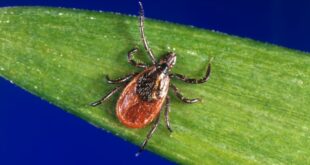The technique first gained traction during the COVID-19 pandemic.

A Calgary research facility that developed the most comprehensive wastewater monitoring program in the country during the COVID-19 pandemic is setting its sights on another burgeoning public health issue: illicit drug use.
Advancing Canada Water Assets (ACWA), a joint initiative between the City of Calgary and the University of Calgary, is applying the same techniques it used to monitor COVID-19 case numbers to track illicit drugs in the province’s wastewater.
Dr. Mike Parkins, an infectious disease physician and a professor at the University of Calgary Cummings School of Medicine, is a founding member of the wastewater surveillance team. He hopes the findings of the pilot project will ultimately help reduce harm to drug users by identifying dangerous toxins as soon as they appear.
“As this platform grows we have the potential to provide warning information to health-care workers, policymakers and ultimately substance users about the changing nature of the drug supply,” said Parkins.
Parkins said that wastewater is the great equalizer, making it an ideal data source for public health issues that affect vast segments of the population and are potentially difficult to measure.
“One of the challenges we have in understanding population health is the metrics that we use are all very biased, we’re only sampling the tip of the iceberg,” said Parkins.
“Wastewater which [is collected] from everybody is intrinsically inclusive, comprehensive, and unbiased and provides objective data on the populations that are being monitored.”

Kayla Moffett, an analytical chemist at ACWA, said she and her team are currently testing wastewater samples for opiates, fentanyl, psychedelics and cocaine, as well as dangerous cutting agents — substances used to increase the bulk of drugs — such as levamisole and xylazine.
“We have multiple municipalities that we are testing [in], and we are testing 48 different analytes that are related to illicit drugs,” said Moffett.
Dangerous opioids on the rise
Parkins said that based on the data provided by researchers like Moffet, he’s been able to identify some worrying trends in the current drug supply in the province.
One is the intermittent appearance of carfentanil in wastewater samples, a synthetic opioid that is 100 times more toxic than fentanyl. Originally created as a tranquilizer for large animals, carfentanil has cropped up across the country causing drug poisoning deaths.
“When carfentanil enters the drug supply its potency is dramatically greater and the potential for overdoses is significantly [higher],” said Parkins.
The data also shows the introduction of cutting agents like levamisole into the drug supply, a toxin which can have various side-effects, from causing severe rashes to suppressing a person’s immune system.
Parkins said that because toxins like levamisole can cause a wide range of symptoms, it would help save doctors time, money and lives if health officials knew what was present in the drug supply at any given time.
According to data published by the Alberta substance use surveillance system, EMS responses to opioid related incidents are already higher in 2023 than the whole of last year. Current 2023 figures are the highest recorded in the last five years.
Communicating the findings
Kevin Frankowski is the Executive Director of ACWA. He said that the wastewater monitoring technology could be used to track a whole suite of pathogens in the future, not just traces of illicit drugs. ACWA already monitor and report influenza A, influenza B and respiratory syncytial virus (RSV) findings.
A key to the research facility’s work, he said, is the timely and accurate communication of data and trends to the public, including health officials.
“It’s vital to share the data and get it in the hands of those who can best use it, whether that’s individuals who are trying to help themselves or their loved ones, or practitioners who are trying to help patients,” said Frankowski.
“This is important because people, their families and their communities are continuing to suffer from the drug poisoning crisis that’s facing us right now.”
Parkins noted that during the COVID-19 pandemic, resource mobilization enabled ACWA to communicate their findings right away, allowing public health officials to predict peaks in case numbers and track how different strains were spreading.
“We were able to be very transparent with the data [and] share information in real time, not just with decision makers and policy makers but the public,” said Parkins.
“The public [were] able to use those bits of information to inform their behaviours and modify their own risks. We would like to get [there] ultimately with substances of abuse.”
Parkins envisions that a future alert system utilizing the findings from ACWA could come in the form of an app, for example, that could provide warnings for drug users when dangerous toxins show up in the city’s drug supply.
“Ultimately, the more people that have access to the information, the more harm we can avoid.”
With files from Erin Collins and Joshua Mclean
ABOUT THE AUTHOR
Kylee is a reporter/editor with CBC Calgary. You can reach her at kylee.pedersen@cbc.ca
*****
Credit belongs to : www.cbc.ca
 Atin Ito First Filipino Community Newspaper in Ontario
Atin Ito First Filipino Community Newspaper in Ontario







